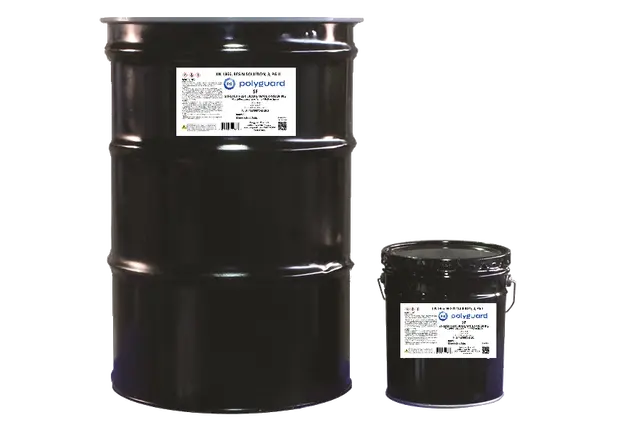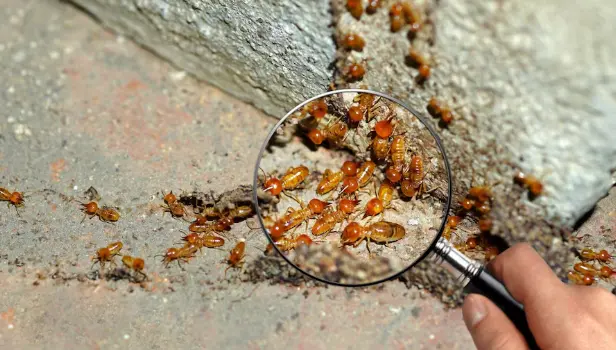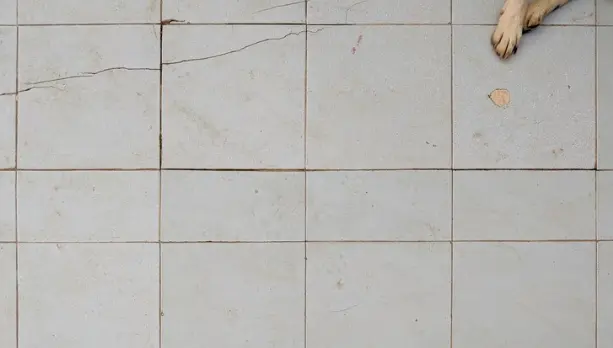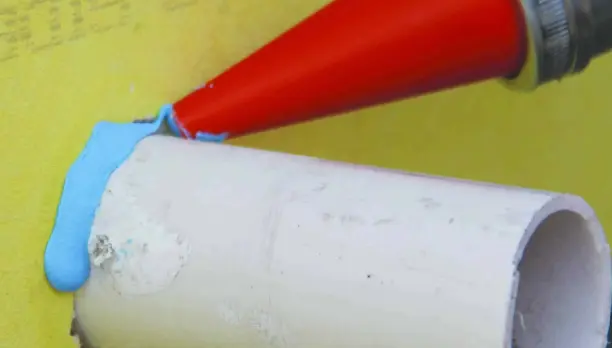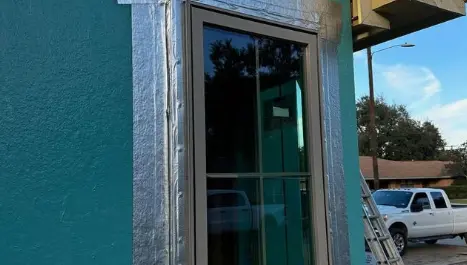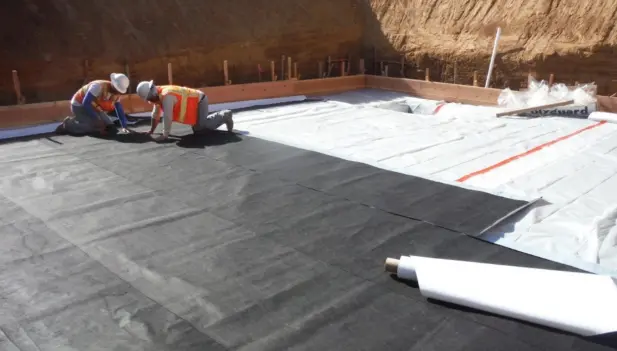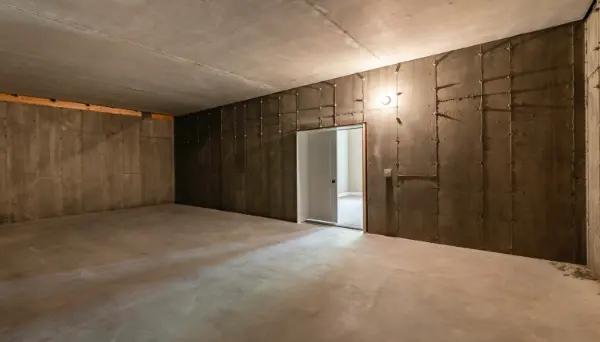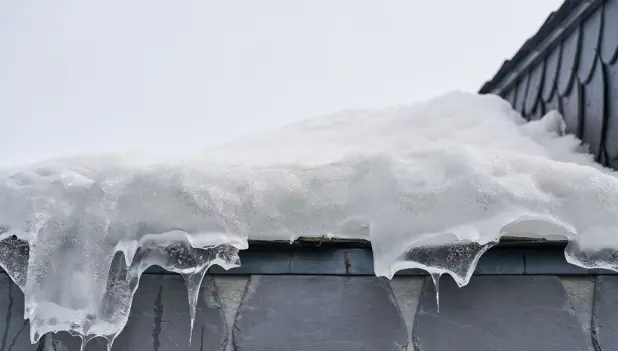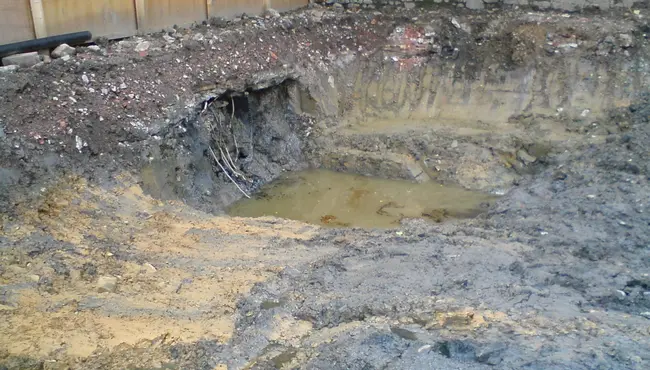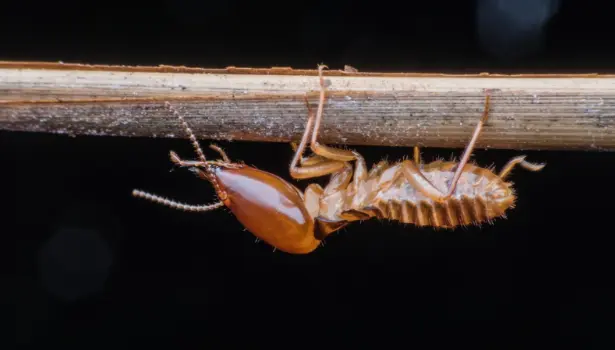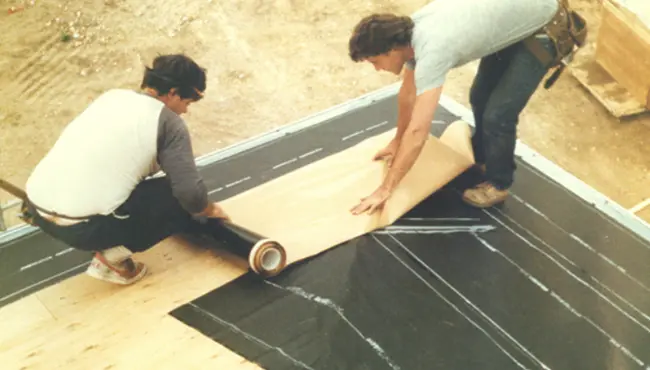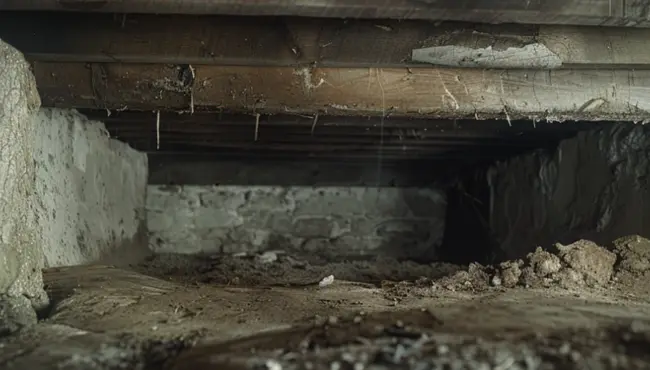Applying the best concrete waterproofing sealer will protect the concrete's integrity and aesthetics and extend its lifespan. The best waterproof sealer for concrete should effectively protect against moisture, chemicals, oil, salt, grease, alkali-silica reactions (ASR), and weather exposure. The best waterproof sealing for concrete cracks helps maintain a long-lasting and beautiful concrete surface for years.
Not applying the best waterproof concrete crack sealer can lead to premature failure and diminish the aesthetic of the concrete due to the following:
- UV light breaks the polymer and other bond chains of concrete, which can result in cracking or spalling and weakening the structure over time.
- In cold climates, moisture infiltrating concrete can freeze and thaw, which can cause it to crack, shift, heave, or buckle.
- Water infiltrating concrete can lead to ASR. ASR occurs when silica in the aggregates reacts with alkali hydroxide in concrete, and forms a gel that absorbs moisture from the surrounding cement or environment, causing the gel to swell, leading to cracks, volume expansion, and stress development in the concrete.
- Chemical infiltration into the concrete can lead to cracking, volume change, and deterioration.
- Oil can permanently stain concrete.
- Not applying the best concrete floor waterproofing sealer can lead to mold (diminishing the air quality if indoors) and cracks, which can result in high maintenance and potential replacement costs.
Polyguard Offers the Best Concrete Waterproofing Sealer Products
Polyguard's robust, high-performance concrete waterproofing sealants provide superior, long-lasting protection against moisture, air infiltration, and exfiltration:
Polyguard Stretch Flex (Above-Grade)
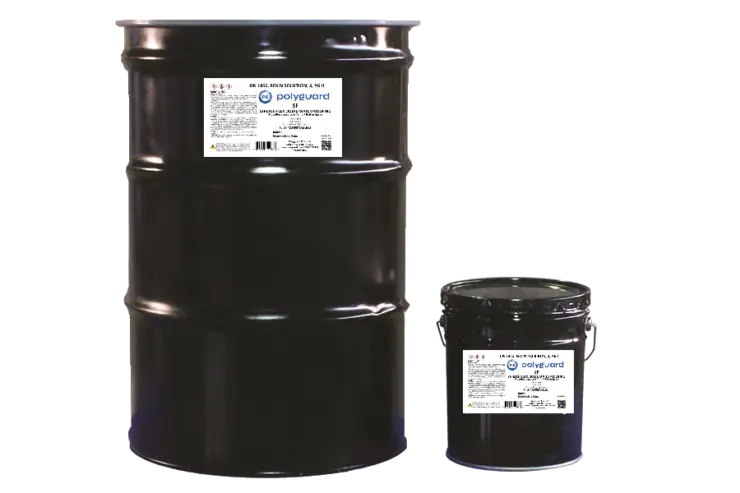
Polyguard designed Stretch Flex (Above-Grade) coating to stop moisture, air infiltration, and exfiltration. It is a patented, elastomeric, thermoplastic, synthetic rubber coating, waterproofing concrete sealer. Builders can apply above-grade Stretch Flex to concrete, concrete masonry walls, exterior-grade gypsum sheathing, plywood, and oriented strand board (OSB) in cold weather climates.
Polyguard Stretch Flex (Above-Grade) features and benefits include:
- NFPA 285 compliant
- Non-permeable (0.216 perms)
- Solvent-based
- Available in low VOC options
- Application temperatures range from -20 ℉ to 120 ℉
- Six months of UV resistance
- 40 mil wet/20 dry mils (40 ft2 per gallon theoretical coverage rate)
- Application of Polyguard's Stretch Flex (Above-Grade)
Apply Stretch Flex (Above-Grade) to clean, dry, particle and frost-free concrete for a first line of defense against moisture infiltration and exfiltration. However, before applying Stretch Flex, Polyguard recommends smoothing and filling rough concrete, surface protrusions, defects, and voids greater than 1/2-inch in depth with Detail Sealant PW™ or Polyguard BB GF (formerly Blue Barrier Gap Filler), allowing a minimum of 1 hour for sealant to skin over before covering, adding time for lower ambient and surface temperatures. Cure time is less than an hour at 75 °F (24 ºC) and 50-percent relative humidity.
Polyguard Stretch Flex (Below-Grade)

Stretch Flex (Below-Grade)
Stretch Flex (Below-Grade) provides exterior waterproofing of concrete, CMU, precast concrete foundations, and other hydro-positive side structural surfaces. It is a patented, single-component, elastomeric, cold liquid-applied thermoplastic, durable waterproofing concrete sealer capable of bridging substrate shrinkage cracks up to 1/16-inch.
Features and Benefits of Stretch Flex (Below-Grade) include:
- Straightforward application saves time and lowers foot2 costs
- Fast prep, easy spray application, and quick clean up
- Daily foot2 installation is 6,000 to 8,000 foot2, which eliminates downtime between trades
- Single-component product requires no mixing, to help ensure uniformity and quality while also reducing waste and labor
- Applicators can apply wet products to dry products for membrane repair, to create a continuous system with no seam or possible breach created
- Allows for use in temperatures as cold as -20°F, which can help avoid tenting and heating in cold climates
- After application, it allows for immediate exposure to rain
- Available in low VOC options
- Contains thermoplastic technology to create a mold-resistant barrier that microorganisms cannot penetrate
- Unrivaled UV protection aids in timeline flexibility
- Factory-controlled, single-component products ensure consistency
Application of Stretch Flex (Below-Grade)
Apply to dry areas that are clean of dirt and debris, and mortar smears, form release agents, frost-free, and ice-free. Provide cured substrates with a minimum 175 PSI pull-off strength for maximum results.
Polyguard's AIRLOK FLEX® V
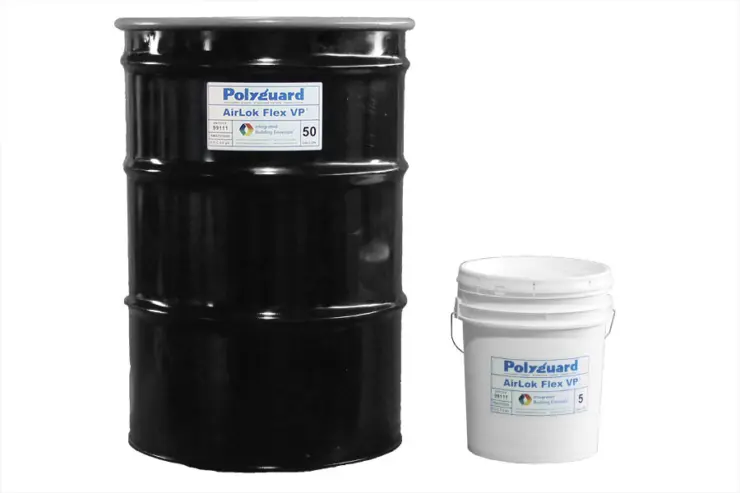
Polyguard's concrete waterproofing sealer AIRLOK FLEX® VP will successfully prevent infiltration and exfiltration of moisture, air, and soluble contaminants, like chlorides, into the concrete
For above-grade concrete, AIRLOK FLEX® VP's strengths offer a superior concrete waterproofing sealer solution:
- Creates a tough, water-based, continuous bonded elastomeric barrier
- Allows for applications in a temperature range of 40°F up to 120°F
- A permeability of 10 perms
- 32 wet mils to 16 dry mils
- Forms durable protection up to 100 PSI adhesive pull-off strength
- Contains a VOC content of 50 g/L
- Offers UV resistance up to 1 year
- Compliant with NFPA 285
- AIRLOK FLEX® VP is simple to prep, roll, or spray, and clean up, which saves both money and time. Furthermore, it lessens energy loss and costs because it blocks air infiltration and exfiltration through the coating to the substrate.
Application of Polyguard's AIRLOK FLEX® VP
Polyguard's AIRLOK FLEX® VP sprays or rolls directly on to clean, dry concrete that is free of loose material and frost for a first line of defense against moisture infiltration and exfiltration. However, before applying AIRLOK FLEX® VP, Polyguard recommends smoothing and filling rough flush concrete, surface protrusions, defects, and voids greater than 1/2-inch in depth with Detail Sealant PW™ or Polyguard BB GF (formerly Blue Barrier Gap Filler), and allow a minimum of 1 hour for sealant to skin over before covering, adding time for lower ambient and surface temperatures. Cure time is less than an hour at 75°F (24º C) and 50 percent relative humidity.
Builders can use AIRLOK FLEX® VP on exposed and unexposed concrete, concrete masonry walls, plywood, and oriented strand board for long construction schedules.
NOTE: Airlok FLEX® VP application temperatures start at 40°F (5°C) and above.
Why Choose the Best Concrete Waterproofing Sealers?
Applying the best concrete waterproofing sealers, like Polyguard's AIRLOK FLEX® VP, Stretch Flex (Below-Grade), and Stretch Flex (Above-Grade), will protect against moisture, chemicals, oil, salt, grease, ASR, and weather exposure, to help preserve the concrete's integrity and aesthetics and extend its lifespan.
For more on the best concrete waterproofing sealer, don't hesitate to contact our Polyguard® professionals today!
